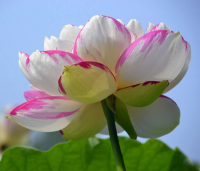Distinct expression and methylation patterns for genes with different fates following a single whole-genome duplication in flowering plant
2020
期刊
Molecular Biology and Evolution
作者
Tao Shi
· Razgar Seyed Rahmani
· Paul F Gugger
· Muhua Wang
· Hui Li
· Yue Zhang
· Zhizhong Li
· Qingfeng Wang
· Yves Van De Peer
· Kathleen Marchal
· Jinming Chen
下载全文
- Oxford University Press (OUP)
- ISSN: 0737-4038
- DOI: 10.1093/molbev/msaa105
